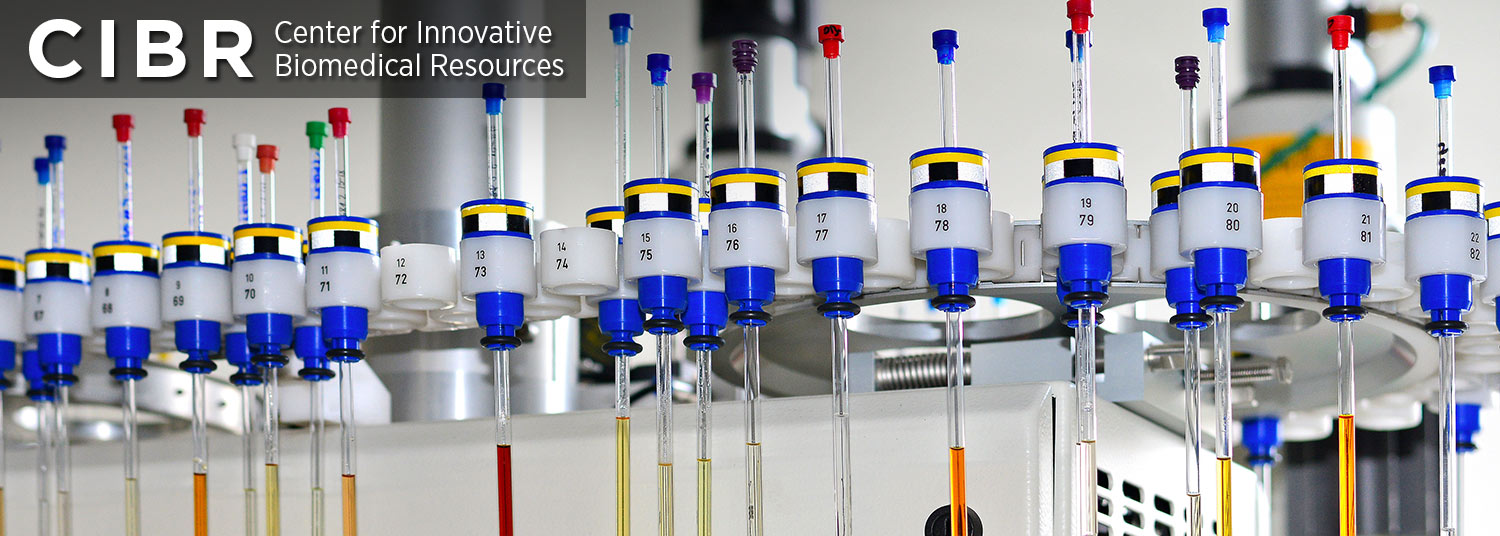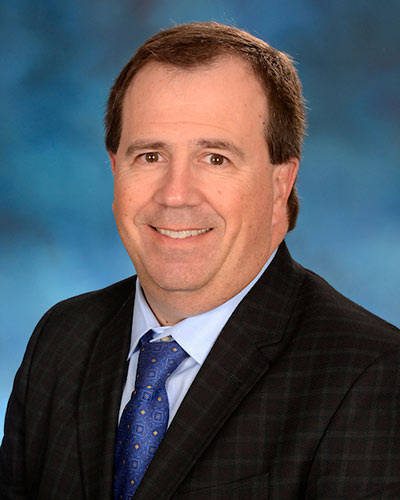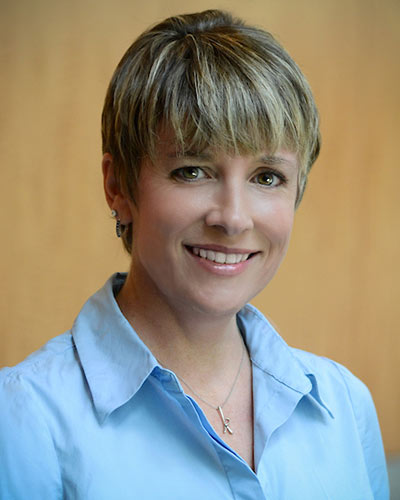Center for Biomolecular Therapeutics (CBT)
MISSION:
The Center for Biomolecular Therapeutics (CBT) was established as a partnership between the University of Maryland-Baltimore and the University of Maryland at College Park. Located within the Institute for Bioscience and Biotechnology Research (IBBR), a three-building complex of research laboratories at the University of Maryland College Park, Shady Grove. The CBT is comprised of faculty from the University of Maryland, Baltimore (including the Schools of Medicine & Pharmacy), The University of Maryland College Park, The University of Maryland, Baltimore County, the IBBR, and several other Universities within the USM. The CBT director, David J. Weber, PhD, also serves as the Associate Director of the IBBR.
The CBT's mission is to facilitate the identification and development of diagnostics and therapeutics. To accomplish this goal, the CBT:
- Collaborates with research and clinical faculty across all USM campuses to identify important biological targets;
- Develops a parallel educational process to raise the level of expertise across USM concerning the discovery-to-commercialization “pipeline”, including regulatory and business expertise, and creation of an active visiting faculty scientist and postdoctoral fellow program;
- Interacts with the biotechnology and pharmaceutical industries in coordination with our Offices of Research and Development (ORD) to help maintain CBT’s focus on the most biomedically and commercially important targets, diagnostics, and therapeutics,
- Manages state-of-the-art scientific discipline-based programs necessary for the discovery and regulation of disease targets.
EQUIPMENT:
NMR Spectrometers
UMB has a NMR facility under the direction of Dr. David Weber (PI) that is equipped with an Avance III 600 MHz, Avance 800 MHz, and an Avance III 950 MHz NMR spectrometers all equipped with cryoprobes. The Bruker 600 MHz NMR spectrometer was installed in 1996, and upgraded with a cryoprobe in 2003 and to an Avance 3 console in 2007. The cryoprobe was for the 600 MHz NMR spectrometer was upgraded again in 2010. The Avance 800 was installed in 2003, and both spectrometers are located in upgraded space where tight regulation of temperature and humidity are maintained. The University of Maryland received a high-end instrumentation grant for the purchase of a 950 MHz NMR spectrometer with a cryoprobe (RR029601-01; PI: David J. Weber) that is located in the University of Maryland School of Medicine NMR facility; Director: David J. Weber). This instrument is shared among faculty at The University of Maryland, Baltimore (UMB), The University of Maryland Baltimore County (UMBC), and the University of Maryland, College Park (UMCP) in addition to members of the CBT. The spectrometers and all of the computers in the NMR facility are connected to uninterrupted power (UPS), so experiments and calculations are never stopped inadvertently due to power surges or power outages. The magnets are on vibration isolation posts, and the digital consoles are equipped with four frequency channels, pulsed field gradients, a modern temperature control units, and all the hardware and software necessary for completing modern NMR experiments including all those listed in this proposal. An automatic sample changer is also available on the 800 MHz NMR spectrometer. Additionally, 400 MHz and 500 MHz spectrometers are also in the newly renovated NMR center nearby the 600, 800, and 950 MHz spectrometers for routine testing of organic samples in a walk-up mode. Likewise, two 500 MHz, two 600 MHz, and a 900 MHz NMR spectrometers are available to CBT members in the IBBR in Rockville.
X-Ray Crystallography
X-ray crystallography data collection will proceed on our Rigaku MSC micromax 7, X-ray generator with an R-Axis IV++ and Oxford cryosystem here at the University of Maryland School of Medicine in collaboration with Dr. Toth. The FLUOstar Optima multi-detection microplate reader is from BMG LABTECH, Inc., Durham, NC and the robotics system is the Biomek FX Laboratory Automation Workstation with the AP96 head from Beckman Coulter, Inc., Fullerton, CA. A Biomek NX robotics system from Beckman is also available in the Weber laboratory. With permission from Dr. Pozharski, the PI’s laboratory obtains bimonthly access to the Stanford Synchrotron Radiation Lightsource facility on a regular basis for remote robotic data collection. Members of the PI’s group are now independently collecting and interpreting such data as necessary for determining X-ray crystal structures (i.e. Drs. Wilder, Cannon and Ms. Liriano and Ms. Thompson). Data collection is also ongoing in the IBBR with in-house X-ray diffractometers for CBT members in conjunction with Drs. Osnat Herzberg and Roy Mariuzza.
Target Validation and Screening Group
The HTS center has a Beckman-Coulter Biomek FX Laboratory Workstation a flexible automated liquid handling system with a large work surface accommodating most any high throughput job size. The system comes configured with 96-channel multichannel pipetting capabilities simplifying high throughput automation in 96- or 384-well format. In addition, the HTS center has access to a Beckman-Coulter Biomek NXp in the Weber Lab. While the Biomek NXp is a smaller instrument then the FX it is equipped with a Span-8 pipetting head providing the highest range of microplates and containers being able to aliquot to and from 6, 12, 48, 96, and 384 well plates, test tubes, eppendorf tubes, and various other costume container including the ability to “cherry pick” select wells from microplates. Plate readers available for the liquid handling robots include a BMG FluoroStar Microplate Reader, a lens based fluorescence microplate reader capable of measuring intensity changes in a range of microplates including 96- and 384-well plates, and a BMG PolarStar Microplate Reader (in the Weber Lab). This plate reader is also a lens based fluorescence microplate reader with additional capabilities including measuring fluorescence intensity and polarization, FRET, TR-FRET, and luminescence in a range of microplates including 96- and 384-well plates. The HTS center also has access to Bruker 600, 800 and 950 MHz NMR spectrometers with the B-ACS 60 Automatic Sample Changer on the 800 MHz NMR (NMR Center). The HTS Core is currently housed at the NMR Center in the basement of HSFII that is home to 600, 800, and 950 MHz Bruker NMRs equipped with an automatic sample changer, for 60 samples, making it an ideal instrument for screening fragment libraries. Miscellaneous equipment and lab space for performing both in vitro and cell based assays are available in the HTS facility in the basement of HSFII including a Forma Series II water jacketed CO2 incubator, a 4ft biological safety Cabinet, inverted microscope, -20° C freezer, 4° C refrigerator, and a Thermo HN II centrifuge w/ microplate carrier.
The TVS group has 60,781 small drug like compounds available: (1) The ChemDiv 40K collection is composed of 40,000 diverse chemical compounds purchased from Chemical Diversity Labs (ChemDiv) in a 384-well format, each at 10 mM in 100% DMSO. (2) The Maybridge HitFinder Collection is a collection of 14,400, drug like compounds from Maybridge special packaged as a dry film with each compound in a 384-well plate format, which are then typically suspended in 100% DMSO at 10 mM. (3) MicroSource Spectrum Collection is made up of 2,000 compounds, 50% drugs, 30% natural products, and 20% other bioactive components available in a 96-well format, each at 10 mM in 100% DMSO. (4) The SBi Collection is a collection of 4,381 compounds collected from several commercial sources plus 67 compounds synthesized in house (by Andrew Coop Lab). The TVS has just purchased the Maybridge Ro3 Fragment a collection of 1,000 compounds meeting the Rule-of-3 Fragment Library offers keys features necessary and available in many fragment libraries while guaranteeing solubility of the compounds @ 200 mM in DMSO and having chemically linkable analogs available for future linking of fragments into higher affinity compounds.
In vivo Biology and Drug Testing Group
A Zeiss Axio Observer microscope equipped with brightfield, phase and epifluorescence optics as well as an AxioCam MRc5 camera, computer and software (NIH-Image, Adobe Photoshop, Adobe Illustrator) for acquiring and analyzing digital images is being purchased by the IBBR. The Institute for Bioscience and Biotechnology Research (IBBR) maintains shared equipment that includes a Zeiss LSM710 34 channel confocal imaging system; a Typhoon 9400 TrioTM Imager for fluorescence and phospho-imaging; a FACS Aria II cell sorter; and ultracentrifuges/rotors. A shared instrumentation grant for an IVIS Lumina XR in vivo imaging system is pending.
Protein Production and Biophysics Group
The Structural Biology (SB) program has equipment for cell growth, harvest, and purification including: 3 shaker incubators with one capable of cooling, 3 Bioflow Fermentors, a GE AKTA Pilot, 2 GE AKTA FPLCs, CO2 water jacketed incubators, 2 Sorvall Superspeed centrifuges with up to 6x500 mL bottle capability, probe sonicator and other cell disruption instruments. For the characterization of proteins and protein interactions the PPB program has: 3 Beckman Coulter HPLCs, a Microcal VP Isothermal Titration Calorimetry (ITC), a Photon Technology International (PTI) fluorimeter with integrated auto-titrator, UV/Visible spectrophotometer. NMR studies can be performed in conjunction with the Center for Vascular and inflammatory Disease (CVID) Core Facilities program. Through the at UMB: an Applied Biosystems Procise 494 protein sequencer, a Thermo Finnigan LCQ Advantage ion trap mass spectrometer, and three HPLC systems capable of micro analytical to preparative scale separations of proteins and peptides, SLM fluorimeter, a JASCO circular dichroism (CD) spectropolarimeter, and a BiaCore 3000 surface plasmon resonance instrument. The shared services in the University of Maryland Marlene and Stewart Greenebaum Cancer Center (UMGCC) provides addition MS, HPLC, and peptide synthesis services. Additional equipment is available thru core facilities within the IBBR that include: two Biacore (T100 and 3000) surface plasmon resonance instruments, 2 Microcal VP differential scanning calorimeters, 3 Microcal VP isothermal titration calorimeters, a Beckman XLA (absorbance optics) and XL-I (absorbance and interference optics) analytical ultracentrifuges, Voyager DE MALDI-TOF and Perseptive Biosystems Mariner ESI mass spectrometers, Applied Biosystems 4700 Proteomics Analyzer, a Typhoon 9400 TrioTM Imager for fluorescence and phospho-imaging, and a complete Wyatt dynamic light scattering equipment coupled to an GE AKTA FPLC system.



